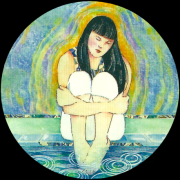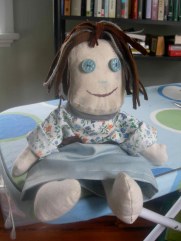As I have continued my reading of Lullabies for Little Criminals by Heather O’Neill, Baby has lost even more of her dwindling childhood innocence. As her relationship with Jules diminishes, she seeks happiness in other things such as drugs, and her newfound relationship with the local pimp, Alphonse. During this phase of her life I have taken notice to various archetypes in the characters, as well as some symbolic items.
Both Alphonse and Jules represent the trickster archetype throughout the plot. This is someone that uses their knowledge to play tricks and break the rules of common society. Alphonse showers Baby with gifts and affection, something she is not at all used to in her life at home. Despite how this appears to Baby, she is still naive, and Alphonse is using their strengthening “relationship” to convince her to sleep with him. Baby had come to accept this for a while, until Alphonse takes it even a step further, and manipulates her into selling her body to strangers. After her first encounter she notes, “I stank differently. I didn’t smell like myself. I smelled like cigarettes and somebody else’s hands” (O’Neill 222). Baby can feel herself drifting further away from the child she once was, with the help of Alphonse’s trickery.
Jules also represents the trickster archetype, but in a different way than Alphonse. Jules heroin addiction is one that continues to get the better of him throughout the plot, even after going to rehabilitation centres. He will consistently bribe Baby to leave the house so he can get high with his rotating crowd of friends. Baby, still being naive, believes this is what is best for Jules, and obeys his wishes. She falls for his bribes continuously and seemingly ignorant to the fact that her father’s drug addiction is increasing in severity by the day.
Another character archetype I observed was Baby as the victim. The victim archetype is represented by the underdogs and the disadvantaged, and typically start with tragic circumstances that they don’t have the tools to process. For Baby, this tragic start began with her mother dying when she was very young, and her teenage father starting on his path towards drug addiction. Because Baby has never had very much affection from Jules, she seeks it from any other person who will give her their attention. However, because she has always lived in run-down areas of town, the people who are giving her the attention she is desperately looking for are addicts, pimps, and other abused children. Her lack of strong relationships leaves her alone more often than not. After getting in a large fight with Jules, she has only herself to turn to for comfort. She says, “I felt so sorry for myself that I hugged myself like a baby. ‘It’s okay. It’s okay sweetie,’ I whispered to myself until I felt better” (O’Neill 157).

A symbolic item that I took note of is the rag doll that was given to Baby by her mother before she was born. This doll is the only thing she has to remember her mother by, and she treasures it quite dearly. She explains, “The doll also made me feel sweet inside, too, because it made me feel that at some point, even before I existed, I had been loved” (O’Neill 97-98). As well, this doll in its worn-down state represents the childhood innocence that Baby is still holding on to by a thin thread. It is falling apart in many aspects, but is still surviving, just as Baby is.

Another symbol that this doll represents is Baby’s relationship with Jules. The doll starts out tattered and falling apart, but she still loved it, similar to how she loved Jules despite all the rough patches in their relationship. But later in the novel, Baby comes home to find Jules has completely torn apart her doll leaving its remains all over her floor. Suddenly, something that she had loved so dearly made her sad to look at. She recalls sadly, “I’d never get another one. Jules never thought to buy me pretty things like that. That doll had been like a miracle to me. It had reminded me that I’d been loved by a mother. Now I was a nothing, a real nobody” (O’Neill, 119). This represents the beginning of the downfall of her relationship with Jules, as they slowly begin to communicate less and less until their father-daughter relationship is near completely broken.
Baby’s life is currently on a downhill slope, and though it is not looking too promising, I would love to see her pick herself up and out of it.
Works Cited
O’Neill, Heather. Lullabies for Little Criminals: a Novel. HarperCollins, 2006, New York. Print.

Hey Jess,
I thought your blog post was very well written. I read your last one and I enjoyed following up. It seems like Baby’s life is falling apart and it is because of the people in her life. It seems like she needs to let go of some people in her life to move on. Jules is putting her under pressure and she does not have a mentor figure to get help from. It is hard to see a positive ending to this story, but hopefully Baby will manage to over come these obstacles. In my novel the main character faces some drug addiction but she overcomes, hopefully Jules will too. I also liked how you compared Jules and Baby’s relationship to the doll. Good work!
LikeLike
Hey Jess, I enjoyed reading your archetypal blog post. I have not read your novel, but I was fully able to understand the background of her story with the information you gave in the blog. I really liked how you connected Baby’s character as the “victim” to her life before and the fact that her upbringing has left her on a destructive path.
LikeLike
Hey Jess. You had a great blog I really enjoyed it. I have not read this book but you gave a great description of what the baby has to go through and it has taught me a lot about your book. I like how you show exactly how dark the story is and how the baby has reacted to the situation.
LikeLike